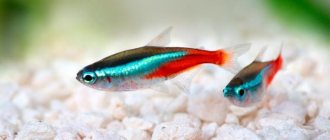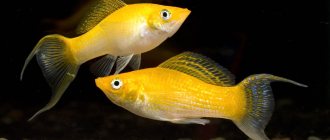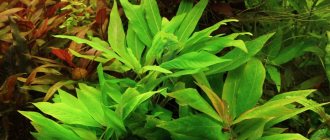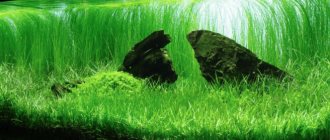- Wild animals
- >>
- Fish
Discus is a cute and colorful fish that inhabits the Amazon rivers. It has a round body, slightly flattened on the sides. Quite a large fish, adults can reach a length of 20 centimeters. For their bright colors and calm disposition, they are loved by aquarists around the world. And this is understandable, because you rarely see more beautiful fish. When kept in an aquarium, they do not cause any trouble and delight their owner.
Compound
The medicine Discus compositum contains a number of components:
- Cartilago suis;
- Discus intervertebralis suis;
- Medulla ossis suis;
- Funiculus umbilicalis suis;
- Natrium riboflavinum phosphoricum;
- Embryo suis;
- Acidum ascorbicum;
- Glandula suprarenalis suis;
- Thiaminum hydrochloricum;
- Cimicifuga racemosa;
- Pyridoxinum hydrochloricum;
- Nicotinamide;
- Pratensis;
- Pulsatilla;
- Secale cornutum;
- Mercurius praecipitatus;
- Ruber;
- ledum palustre;
- Gnaphalium polycephalum;
- Citrullus colocynthis;
- Argentum metallicum;
- Ranunculus bulbosus;
- Cuprum aceticum;
- Zicum metallicum;
- Medorrhinum-Nosode;
- Aesculus hippocastanum;
- Ammonium chloratum;
- Sepia officinalis;
- Kalium carbonicum;
- Acidum picrinicum;
- Berberis vulgaris;
- Acidum silicum;
- Acidum DL-alpha-liponicum;
- Calcium phosphoricum;
- Natrium diethyloxalaceticum.
pharmachologic effect
Discus Compositum is a complex homeopathic medicine that affects the body, activating protective functions. The influence of components of mineral, natural and animal origin on the body ensures the normalization of dysfunctions of various body systems. The product has an antispasmodic, regenerating, sedative, analgesic, anti-inflammatory, and detoxifying effect.
Discus Compositum injections help improve metabolic processes in the body.
Indications for use
The drug is used in the treatment of manifestations of osteochondrosis , for symptoms that cause herniated intervertebral discs . The injections have a direct trophic effect and improve the elastic properties of the disc. The product also increases the hydrophilicity of the disc and provides a resorption effect.
The drug is prescribed for the treatment of diseases of the ligamentous apparatus of the joints and spine. The drug is also indicated in the treatment of osteomalacia , exostoses , myalgia , gout . Discus Compositum is prescribed for rheumatic manifestations in the spinal column.
Discus compositum, instructions for use (Method and dosage)
The instructions for Discus compositum involve the use of the drug in the form of injections, which are injected subcutaneously into the skin or intramuscularly. If necessary, injections can be administered segmentally, paravertebrally and at acupuncture points. Depending on the characteristics of the course of the disease, the drug can be administered to the patient from 1 to 3 times a week . If Discus Compositum is prescribed during an acute course of the disease, the instructions for use stipulate that the drug is administered daily or every other day.
When prescribed by the attending physician, children from 2 to 6 years old should receive 1/3 - 1/2 ampoules per injection . After the age of six, an adult dosage of Discus Compositum is indicated.
Oral administration of the drug is also possible. In this case, the ampoule of the drug is dissolved in 5-10 ml of clean water, after which the liquid must be drunk, after holding it in the mouth for a few seconds.
The course of treatment usually lasts from 4 to 8 weeks. The duration of therapy can be extended only after appointment by a specialist.
When treating with the drug, it is important to open the ampoules correctly: the colored dot should be located at the top of the ampoule. The contents contained at the bottom of the ampoule should be shaken lightly by tapping the container. After this, the upper part breaks off: to do this, you need to click on the colored dot on the ampoule.
Features of character and lifestyle
Photo: Discus
Discus fish are relatively calm fish. They have a calm character. In nature they live in isolated flocks. One such flock can number up to several hundred individuals. There are usually no conflicts in a flock, except that males may quarrel over a female. Sometimes during the breeding process, the male and female may quarrel with each other. If at that moment they have eggs already laid, they can eat them.
In nature, fish live in small warm ponds and streams with diffused light, warm water and plenty of hiding places. These fish are afraid of loud sounds and sudden movements. Stress has a bad effect on fish, they change their color and feel bad. Next to Symphysodon discus in nature you can find such fish as Cyclidae of various genera, knifefish, catfish, stingrays and piranhas.
In terms of proximity to other fish, discus are not aggressive, and there are no fights for territory. And many other fish will not live in the area occupied by discus fish due to the fact that the water there is too warm and soft. In ordinary life, fish live in schools. Such flocks are usually not clearly formed. During spawning, fish are divided into pairs consisting of a male and a female. Fish spawning occurs in secluded places among the flooded roots of bushes and various plants.
In captivity, these fish are often kept in large, isolated aquariums. Discus fish of all types are quite safe for neighbors, but other fish cannot get along with them because of their heat-loving nature. It is not advisable to plant discus fish together with aggressive angelfish and other fish, otherwise the angelfish may begin to terrorize them and tear off the fins of calm discus fish.
Analogues of Discus compositum
There are no analogues of Discus compositum that would have a similar composition today. To choose a remedy that can replace this homeopathic drug, you must consult a doctor. Analogues that have a similar effect, but contain other active ingredients, are the drugs Artra , Alflutop , Polikatan , Rumalon , Traumeel S , Chondrotek Forte and others.
Story
In 1904, the species Symphysodon Discus was first described, which combined the then-known characteristics of subspecies in the taxonomy of cichlids.
As part of his ongoing study of these fish, Leonard Schultz, an American ichthyologist, identified discus as a new species in 1960 and described two subspecies. True, his information turned out to be inaccurate and, according to other scientists, contradictory. Therefore, at that time there was one system in use, which included the following types and subspecies:
- Heckel's discus - Symphysodon discus Heckell - Heckel's discus S. discus discus Heckel
- Symphysodon aequifasciata Pellegrin - green discus S. aequifasciata aequifasciata Pelegrin - brown discus S. aequifasciata axelrodi Shultz - blue discus S. aequifasciata haraldi Shultz.
Sven Kullander (Swedish ichthyologist), analyzing the taxonomy, eliminated the division into subspecies. In 1986, he wrote the book “Cichlid Fishes of the Peruvian Amazon,” which radically corrected some of the nuances in the systematization of South American cichlids, incl. genus Symphysodon.
In the book, as well as in his other later works, Kullander substantiated the existence of only two species of discus: Symphysodon discus Heckel, 1840 and Symphysodon aequifasciatus Pellegrin, 1904. Kullander considered the remaining species as junior synonyms.
A new view, differing both from the outdated system of dividing the genus into species, which was adopted in the 1960s, and from the division proposed by Kullander, was expressed by Heiko Bleer in the monograph “Bleer's Discus”. In his opinion, the genus Symphysodon includes three species: Symphysodon discus Heckel, 1840, Symphysodon aequifasciatus Pellegrin, 1904, Symphysodon haraldi Schultz, 1960.
In 2006, scientists from Sweden proposed a version of the system, including 3 types of discus, which is still in effect.
- Symphysodon discus Heckell, 1840 - Common discus;
- Symphysodon aequifasciatus Pellegrin, 1904 - Equally striped discus;
- Symphysodon tarzoo Lyons, 1959 - Green discus.
After studying and systematizing discus fish living in nature, attempts were made repeatedly to breed offspring in captivity in order to replenish the list of ornamental fish for keeping in aquariums.
The first discus fry, reproduced in an artificial environment, saw the light of day in Germany around 1933-1936, and the fish were hatched in an amateur aquarium in 1956 on the territory of the former GDR.
A year later, discus fish were brought to the territory of the USSR, but due to a lack of knowledge and proper living conditions, the fish did not take root. The second time they entered the country was in 1962, and they were separated in Estonia.
Discus compositum price, where to buy
The price of Discus compositum in Moscow ranges from 800 to 1000 rubles per package (5 ampoules). In Ukraine, Discus Сompositum can be purchased at a price of 300 hryvnia. You can buy a package of the drug (5 ampoules) in Kyiv, Donetsk and other cities of Ukraine, depending on the place of sale, from 300 to 400 hryvnia. In Minsk, the drug can be ordered from online pharmacies.
- Online pharmacies in RussiaRussia
- Online pharmacies in UkraineUkraine
ZdravCity
- Discus compositum solution for in.
2.2 ml 5 pcs Biologische Heilmittel Heel GmbH RUR 1,487 order - Discus compositum solution for in. 2.2ml 100 pcs Biologische Heilmittel Heel GmbH
RUR 19,561 order
Pharmacy Dialogue
- Discus compositum ampoules 2.2ml No. 5Biologische Heilmittel Hell
RUB 959 order
show more
Pharmacy24
- Discus Compositum 2.2 ml N5 solution for injection Biologische Heilmittel Heel GmbH, Germany
663 UAH.order
How to properly decorate an aquarium
How the fish will feel in it, their health and reproduction depends on how well the aquarium is designed.
The main and most important factor is the water temperature, which should be around 30°C. This also becomes the main argument when choosing plants that will be placed in an aquarium, since not all of them can grow at this temperature, so high-quality artificial plantings are usually used.
In addition, this species simply requires the presence of driftwood or a large grotto for shelter. Ash, alder or maple are perfect. Avoid introducing resinous trees and oak into the aquarium.It is worth paying special attention to lighting, especially if there are live plants in the aquarium. Since discus do not like bright light, there may simply not be enough light for the plants.
The way out is to create special darkened areas.
Soil selection
Particular attention should be paid to the soil, as it:
- Gives the aquarium individuality and attractive appearance;
- Serves as a filter into which various microparticles fall (be sure to include bottom snails in the discusser);
- Creates conditions for the proliferation of necessary bacteria and fungi;
- Maintains biological balance.
The best soil to place in an aquarium is sand or gravel, laid in a thin layer.
An ideally selected soil should not contain admixtures of various rocks or minerals, as they may contain substances that will cause fish poisoning. Quartz soil is excellent - it is neutral and will cause harm. Sometimes soil is not used at all, as it complicates the cleaning process. And a high degree of water purity is vital for discus.
Aquarium equipment
Sharp changes in temperature are contraindicated for fish that live in subtropical climates; to maintain the required parameters, it is necessary to use an aquarium heater. It’s easy to use – you just need to set the required temperature. The heater will heat up to the set parameter and keep the water optimally warm.
The following equipment is also required:
- Internal filter – necessary for purifying water in a small aquarium;
- An external filter is worth purchasing if the aquarium volume is more than 300 liters. This filter is well suited for an aquarium with discus fish, because it does not create a current;
- Compressor – serves for aeration of water;
- Aquarium lamp – properly selected artificial lighting will help create a cozy, comfortable atmosphere;
- An ultraviolet lamp is necessary to purify water from harmful microorganisms.











